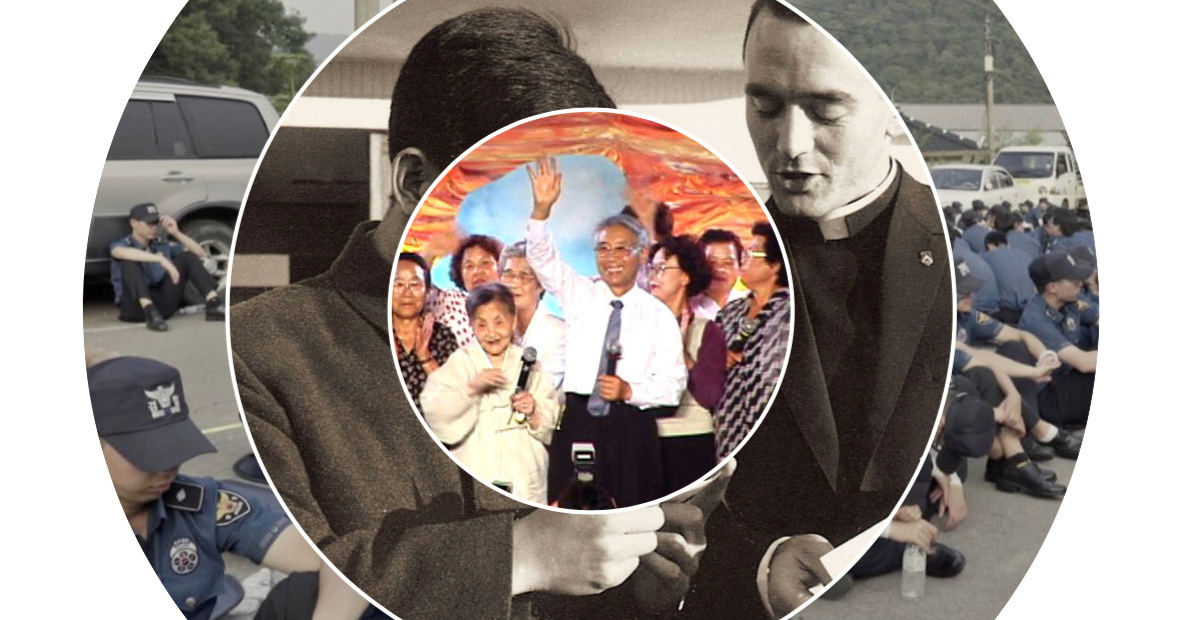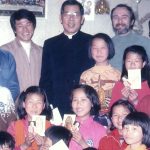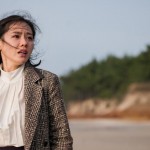Since the early days of cinema, film has often been used as an effective political weapon, either as propaganda or simply to campaign and agitate. Some of the most renowned political films from the silent era include the work of Soviet director Sergei Eisenstein who directed the revolutionary classics Battleship Potemkin (1925) and October (1928). But activist film, as we know it today, largely came into being during the tumultuous political climate of the late 1960s and the 1970s. Film gave voices and power to those protesting the Vietnam War, campaigning against Nuclear Weapons and fighting for the Civil Rights movement and the rights of women. Activist filmmakers demanded that audiences be involved in the wider political and social issues, just as much as they were involved with the films they were watching.
One country with a rich history of political activism and a culture of independent documentary filmmaking, is South Korea. This culture first began to emerge in the late 1980s, and Kim Dong Won was the man who led the charge. Now recognised as the ‘Godfather’ of Korean documentary, Kim will be coming to the UK to talk about his work for the London Korean Film Festival’s first ever Documentary Fortnight; a series of free screenings and events with Kim and other guests in attendance talking about their work, activism and the nature of documentary film collectives in Korea.
Four of Kim’s films will be shown across the Fortnight, including what is perhaps his best-known work, Repatriation. This acclaimed feature puts a human face on the conflict between North and South Korea. Set in the Spring of 1992, when the filmmaker met two long-term North Korean political prisoners recently released from jail where they had spent thirty years accused of espionage. Regarded as one of the most important documentaries ever made in South Korea, Repatriation is a timely film about the consequences of the conflict between these two divided countries.
To celebrate, this LKFF ‘Documentary Fortnight’ we’re taking a look back at some of the best gems of political activist filmmaking. There are thousands of documentaries that could have made the list but we’ve gone some of the lesser-seen films, often censored at the time of their release but all with the same collective approach to fiery political filmmaking.
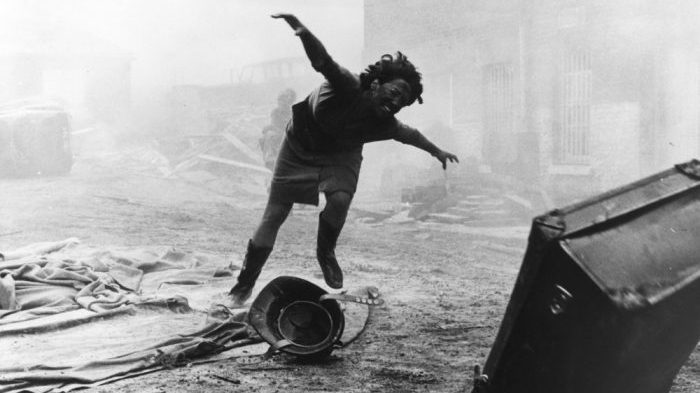
The War Game (dir. Peter Watkins, 1966)
Though not strictly a traditional documentary, The War Game is still one of the best campaigning films to be made about nuclear war, as well as one of the most notorious ‘banned’ films. It was made in 1965 to be aired on the twentieth anniversary of Hiroshima, but it would not be shown for another two decades as the BBC deemed it ‘too realistic’. In the film, a hypothetical Chinese invasion of South Vietnam triggers a new world war between East and West. In the town of Rochester, the anticipation of a nuclear attack leads to chaotic mass evacuations. A stray one-tonne Soviet thermos-nuclear missile explodes above the town, its flash causes widespread blindness and the ensuing firestorm destroys everything in its path as temperatures rise to 500 degrees. We see the acute psychological effects of nuclear war, the destruction of infrastructure, the difficulty disposing of the huge numbers of bodies, the radiation poisoning and riots that would all likely follow such an attack. It is a harrowing warning of the perils of nuclear war and its effect on ordinary people.
The Battle Front for the Liberation of Japan – Summer in Sanrizuka (dir. Shinsuke Ogawa, 1968)
Director Shinsuke Ogawa was fiercely dedicated to both radical politics and collective filmmaking. In 1968, Ogawa founded the Ogawa Productions films collective. They located themselves in the village of Heta, at the proposed construction site of the Narita International Airport near Tokyo. They then stayed there for close to a decade, making a series of seven documentaries about the struggles of the peasants. The first film in that series, Summer in Sanrizuka, follows a newly formed ‘Youth Brigade’ of student activists, who built a radical alliance with a resistance movement of farmers whose lands are threatened by the proposed airport construction. Summer in Sanrizuka is a call-to-arms, portraying the intensity and violence of the radical student movement in Japan at the time. Today, Ogawa’s documentaries continue to be influential in Japan and across Asia.
The Woman’s Film (Women’s Caucus San Francisco Newsreel, 1971)
The Woman’s Film documents the origins of the modern women’s movement in the United States. Its makers were a national collective of revolutionary filmmakers who produced some of the most important agitational and documentary films of the 1960s and 1970s. Centring on the consciousness-raising groups synonymous with the early Women’s Movement, The Woman’s Film was one of the first feminist documentary films of the post-war era. It was also one of the first films to feature an entirely female cast and crew. It delves into the lives of a diverse range of working-class women, including women of colour. By talking about their own experiences, the women come to an awareness of shared oppression under a system of class, racial and sexual inequality. Despite its serious subject matter, the film is buoyed by a fantastic soundtrack and a rich thread of humour.
Arise Ye Workers (Cinema Action, 1973)
Cinema Action was one of several left-wing collectives formed in the late-1960s. They saw the role of their films to ‘record the social, political and community activities of contemporary life in Britain’ and also to ‘make history’ itself. The collective’s films were shown in factory canteens, youth clubs, housing estates, trade union meetings, building sites and pubs, usually followed by passionate discussions. One of the collective’s more powerful films, Arise Ye Workers, transports us back to 1972, a time when the docks were still major employers in East London. The film tells the story of the ‘Pentonville 5’, five shop stewards jailed by the Industrial Relations Court under new powers brought in by Edward Heath’s Conservative government. We learn of the dockers’ fight against redundancy, lay-offs and wage cuts. The film also contains footage of the massive solidarity demonstration, which led to the destruction of the Industrial Relations Act. What had begun as a dispute affecting one industry led to the TUC calling a General Strike. In the 1972, 23,909,000 working days were lost to strike action in Britain.
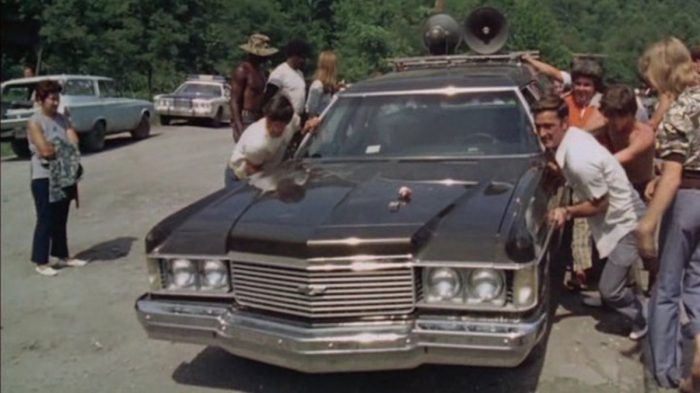
Harlan County, USA (dir. Barbara Kopple, 1976)
There have been few finer films made about labour struggles than Harlan County, USA. This Oscar-winning film is set in Harlan County, Kentucky in June 1973 and tells story of the thirteen-month-long Brookside coal miners’ strike against the Eastover Mining Company. It intimately portrays the everyday hardships that were the lot of the miners and their families. Audiences today might be shocked that even in the 1970s many of the miners were living in substandard shanty housing, without indoor plumbing, while at the same time working in perilous conditions, with little in the way of job security. One of the film’s more poignant moments depicts the funeral of a murdered striker and the sorrow of his family.
Blacks Britannica (dir. David Koff, 1978)
Deemed too radical, Blacks Britannica was suppressed at the time of its release in 1978. It presents an analysis of racism within the context of British history and the post-war crisis of the British economy, from a black working-class perspective. The film also reflects the increasingly militant response within the black community to the continuing attacks upon it, both by organised fascist elements on the streets and by the state itself.
At home in Britain, the film was thought to be dangerous. Questions were raised in Parliament and it was said that it misrepresented the situation in the country. It was forbidden to show the film, so a
member of the film’s production team named Margaret Henry stole the only copy of the film in the country. She then drove across the UK with the film and a 16mm projector, carrying out ‘guerrilla screenings’. Despite this censorship, the film and its producers would be vindicated only a few years later when rioting exploded across the country in 1981.
The Battle of Chile (dir. Patricio Guzmán, 1975-1979)
The Battle of Chile is Patricio Guzmán’s greatest work and a towering achievement of Latin American documentary filmmaking. Famous, but rarely shown, it is a milestone in the development of activist film. In three parts (the film is a total of 260 minutes in length), this gripping and epic documentary tells the story of socialist Chile under the democratically elected Salvador Allende. It documents the events leading his overthrow by bloody coup d’état and the rise of right-wing dictator Augusto Pinochet. The Battle of Chile is essential viewing for anyone who wants to understand not only what happened in Chile in that era, but also the rise of neo-liberalism and the conduct of the Cold War. Filmed clandestinely, it is a miracle that this film ever saw the light of day. The entire crew were detained and cameraman Jorge Müller Silva gave his life… he became ‘disappeared’ under the Pinochet regime a year after the coup. Guzmán then had to smuggle the film out of the country on a boat to Stockholm for safekeeping, before later editing it in exile in Cuba.
The Battle of Chile is harrowing in its portrayal of a peaceful revolutionary movement destroyed by the forces of reaction and counter-revolution. It covers not only the high-politics of the parliament and presidency but also the university, the factory, the unions and the average person on the street. Few films have captured the true nature of open class warfare and laid it so bare.
Carry Greenham Home (dir. Beeban Kidron, 1983)
Carry Greenham Home is a seminal piece of British feminist cinema that documents the protest movement against the decision to install American nuclear cruise missiles in RAF Greenham Common, Berkshire in 1981. In April 1983, thirty thousand women joined together to form a fourteen- mile human chain from Greenham to Aldermaston nuclear power station and the ordnance factory at Burghfield. Director Beeban Kidron spent seven months living with and sharing in the experiences of the women who took action at Greenham Common. The resulting film gives us a clear and faithful picture of everyday life at the camp, in contrast to the media portraits of the time and the often-blurred subsequent collective memory of the protests. Full of powerful song and the spirit of the women who created a space for themselves, Carry Greenham Home shows the women making decisions and trying to scratch out new ways of existing together.

Gulîstan, Land of Roses (dir. Zaynê Akyol, 2016)
This beautiful, full-length documentary sees filmmaker Zaynê Akyol follow in the footsteps of her old babysitter who died in 2000 fighting with the Kurdistan Workers’ Party (PKK) in a Kurdish region of Iraq. Akyol follows a group of female PKK fighters and their heroic struggle against ISIS. The film sensitively portrays women using arms and training for battle, while also laying bare their dreams, desires and motivations. It shows the true humanity and camaraderie of these courageous, determined and thoroughly warm women in their fight against the barbaric nihilism of those who would enslave them.
Radiance of Résistance (dir. Jesse Locke & Jesse Roberts, 2017)
Radiance of Résistance tells the story of nine-year-old Janna and fourteen-year-old Ahed Tamimi, who have become global ambassadors for Palestinian human rights and symbols of resistance. This must-see, award-winning film takes an intimate look at the everyday lives of the two girls and their roles as part of a new generation of Palestinian civil rights leaders. Made by Jesse Locke and Jesse Roberts who travelled to Palestine several times over a year, the film also features grassroots footage shot by Palestinian Journalist Bilal Tamimi. Ahed Tamimi, now 17 years’ old, was recently released on 28th July 2018 after serving an eight month prison sentence in an Israeli military prison. She had been imprisoned for standing up to IDF soldiers who invaded her home and shot her cousin. Amed herself
upon her release, said, ‘I am a freedom fighter, I will not be a victim’.
The London Korean Film Festival 2018 Documentary Fortnight: ‘Another World We Are Making’ 11-12 & 18-19 August
Tickets available now (free, booking essential): http://koreanfilm.co.uk/

